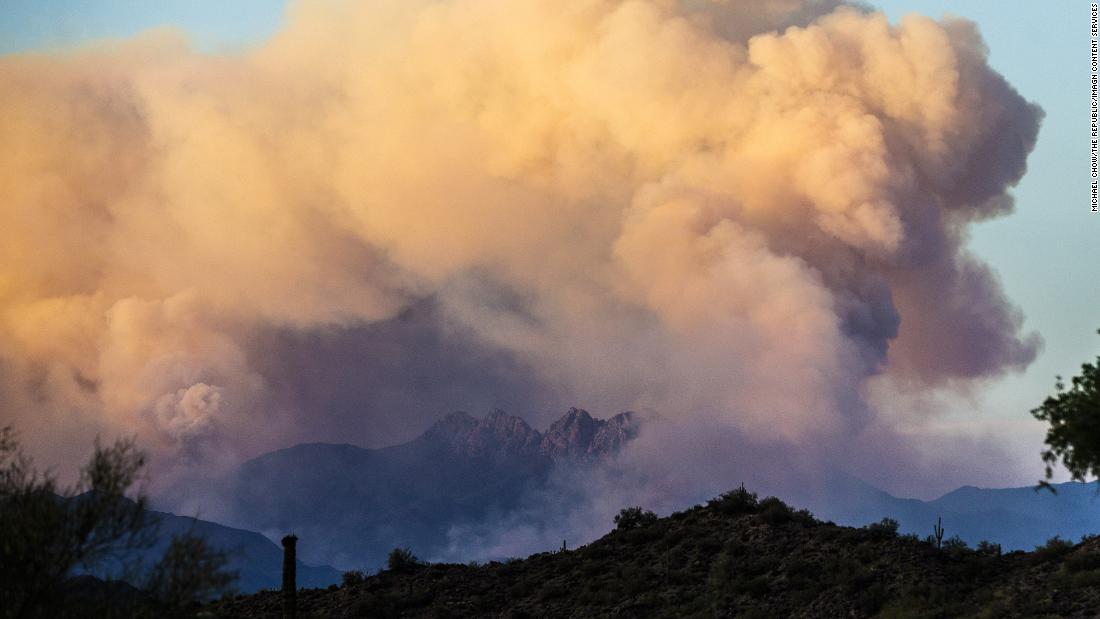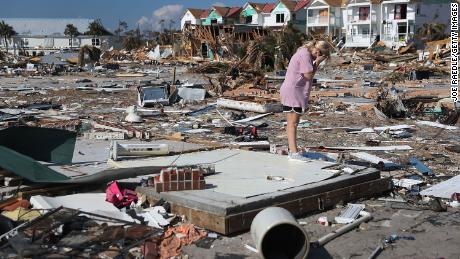Facing a record increase in coronavirus cases, Arizona is besieged by wildfires
Scientists say the fires are an ominous start to what could be a very active fire season in the West, as the pandemic, wildfires and climate change all converge to create a recipe for potential disaster.
As public health officials try to keep the coronavirus from spreading, the pandemic has forced the state’s firefighters to adjust how they suppress fires.
This year, they are prepositioning more crews, spreading out camp sites and relying more on aircraft to dump water, according to Tiffany Davila, public information officer for the Arizona Department of Forestry and Fire Management.
“… It can be difficult at times to be socially distant while fighting fire, especially when there can be hundreds, maybe even a thousand firefighters assigned to any incident. But we are working in the safest possible way to make sure our crews remain healthy and our communities and residents remain protected,” she said.
Extreme heat and a ‘megadrought’ are fueling the fires
Abnormally high temperatures are the main driver of these massive fires, says Daniel Swain, a climate scientist at UCLA and the National Center for Atmospheric Research.
But there are also longer-term trends at play.
According to the National Weather Service in Phoenix, the city has not seen any measurable rainfall in more than two months.
In the short term, favorable weather to help firefighters get control of the flames is not expected anytime soon.
The next opportunity for rain likely won’t come until the monsoon season begins in early to mid-July, Swain says.
“Right now, it looks like it’ll be at least a couple more weeks of very dry, hot and occasionally windy conditions, which are probably going to mean that some of the fires burning now in Arizona are going to be burning well into July,” he said.
A fiery rest of 2020 is likely
The situation in Arizona is concerning, but the possibility of what could come as fire season shifts North to other parts of the Western US is even more troubling, especially in California, which has been devastated by several deadly fires in recent years.
“Unfortunately, [Arizona is] probably a preview of what’s coming to the surrounding states over the coming weeks and months, because of this emerging drought across much of the West and the projections for a warmer than average summer just about everywhere, which is happening pretty often these days with climate change,” Swain said.
To Swain, the prospect of a pandemic colliding with the threats posed by an intense fire season are worrying.
There’s the smoke, that on its own can pose health risks, and even more so in light of how the coronavirus attacks victims’ lungs.
There are the challenges that coronavirus poses for firefighters tasked protecting people from fires.
“It may have been a challenging fire season even without the pandemic, but it’s making things that much more difficult.”
CNN’s Brandon Miller, Monica Garrett and Judson Jones contributed to this report.
![]()




